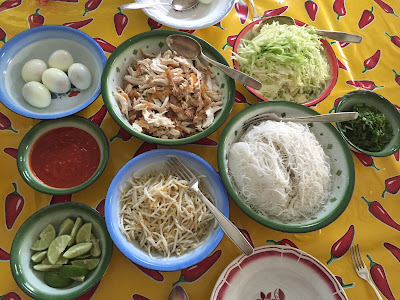I spent last night in bed crying because I had been dumped. No, not by my husband. Not even by a mysterious lover. I had been dumped by my rheumatologist. He said, in his very direct Dutch way, that though he acknowledges my problems are caused by the exact disease he specialises in, he cannot help me. He then spoke those memorable words that must be hammered so deep into every Dutch doctor it sometimes seems all they can say: go home and take a paracetamol.
He was my third rheumatologist since we moved here (I know, less than 2 years ago) and my frustration mounts with every time I encounter that what bothers me most about the Netherlands: hokjesgeest. How to translate hokjesgeest? Geest means spirit and a hokje is a small cage or cubicle - it suffices to say it embodies the exact opposite of thinking out of the box.
Hokjesgeest is what made us flee Dutch education, where at a very young age children are tested, labeled, and pigeonholed accordingly. It also reigns supreme in Dutch medicine, where doctors can’t help any patient without a proper label. A label you only get if you pass a stringent checklist. I spent a frustrated decade in the Dutch medical mill, until I moved to the UK and swiftly got diagnosed by a British rheumatologist that admitted my condition wasn’t ‘classic Ankylosing Spondylitis’ (AS) but who also said ‘auto immune diseases are very complex, and we don’t understand them completely. Your SI joints are inflamed at the moment which matches best with AS.’ The look of confusion on my Dutch doctors’ faces when the Brit uses the terms AS and RA (Rheumatoid Arthritis) alternately in his reports says it all.
The Dutch doctors with their checklists, procedures and labels make me long for the more lackadaisical British, as well as the pill pushers of Singapore. I have to admit that doctors in Asia have a tendency to overmedicate, but this quote from my Singapore doctor resonates with me still: ‘We like to also help less extreme cases with advanced medication. This will not only improve the patient’s quality of life, but also stops the disease from escalating until it is too late.’
Let me stress my Dutch doctors were not bad people. They were friendly, smart and knowledgeable people. Mostly. The first Dutch rheumatologist said my sicca symptoms (dry eyes, mouth and well, dry everything) were not a part of AS, though she admitted they were common with RA. But I did not have that, I had AS. Hence could not have sicca symptoms. When I disagreed, quoting medical research, she replied: ‘Everything you read online is not true.’ For the record, I had not been reading quacksunited.com, the website I consulted was from the national rheumatoid association.
The second Dutch doctor measured and confirmed the sicca symptoms, then uttered this confounding line: ‘If you look online you will find that in many countries, doctors would suggest you have Sjogren Syndrome, but in the Netherlands we have a stricter definition and I can’t diagnose you with it.’ He was a Sjogren specialist, and that was it for him.
The third one, an AS specialist, made me feel optimistic when he said that sicca symptoms were common in AS patients. But down the line, he ended up being the one dumping me.
When I asked him to prescribe the medication that helped me in the past, he told me no. I did not comply with the checklist for it, he would never get the paperwork approved. When I asked him, just to satisfy my curiosity, to put bureaucracy aside, and tell me if he personally felt the medication could help, he got very uncomfortable. He said he did not have enough experience to answer that question because ‘we don’t do that here in the Netherlands.’ This is one of those conversations where afterwards I had a lot of retorts. ‘But you gain experience only by doing!’ and ‘Don’t you read international journals or talk to fellow doctors abroad?’
At my last consult he said: ‘The rheumatoid diseases that we treat are like the tip of the iceberg. There is a whole lot of them under the sea that we don’t see.’ There was no room for me on his lifeboat. He sent me back to the GP to see if another doctor can figure out what can be done against the pain that he agrees is most likely caused by a disease he specialises in.
The one health care professional that I feel understands my body, that helps me, is my physiotherapist. He does not look at scans, nor blood tests. He looks at me. He feels. Unlike my last rheumatologist, who I only saw in person once (consults are done over the phone these days), he sees me every two weeks. He listens to me and his advice is always spot on.
Pondering my medical journey, I have one final fun quote for you. The medal for the most hilarious thing a Dutch doctor said to me goes to an interim huisarts (GP) I saw in the early onset of my disease, who spoke the unforgettable words: ‘Why don’t you come back when you feel better.’ I’ve never been more speechless. She did not even mention paracetamol.





















